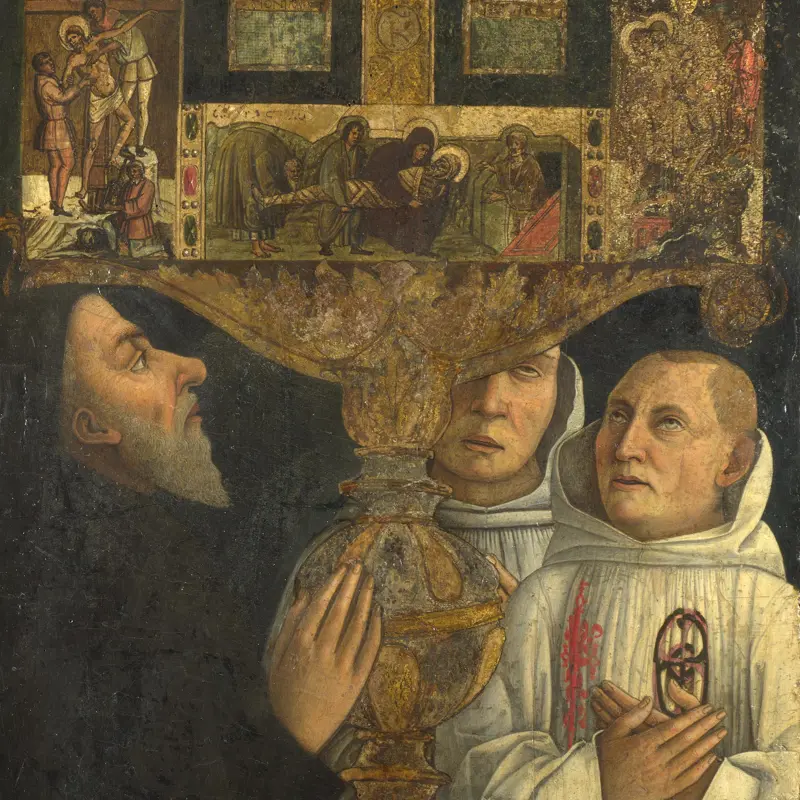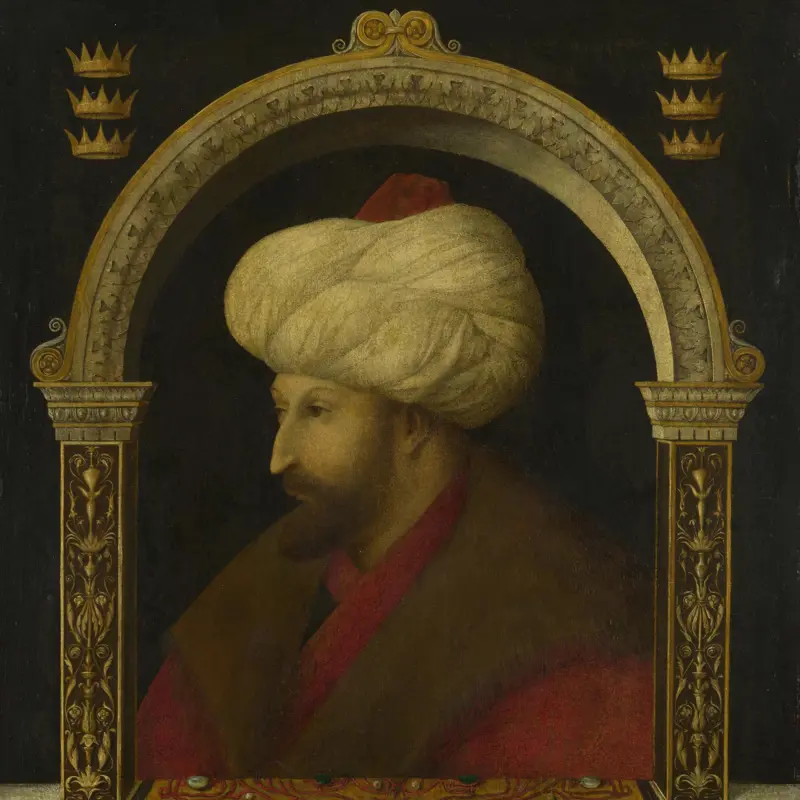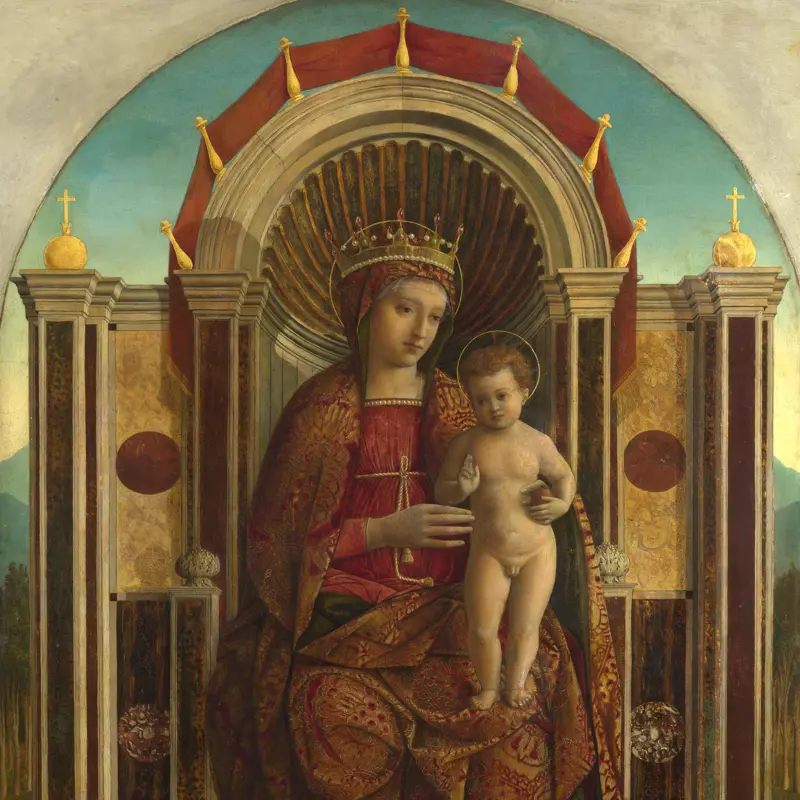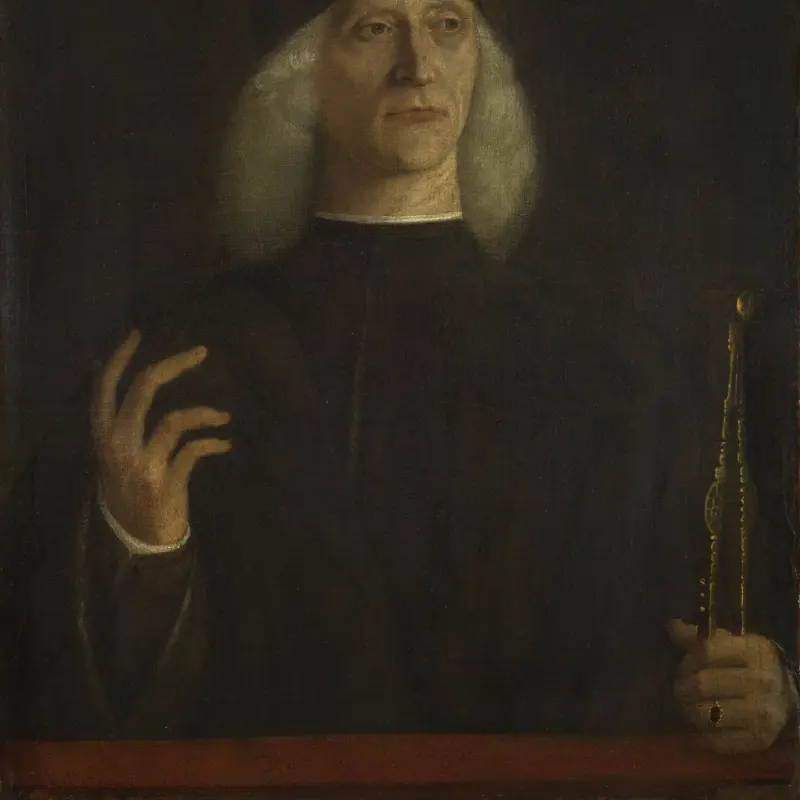After Gentile Bellini, 'Doge Niccolò Marcello', after 1474
About the work
Overview
The unusual horn-shaped cap and sumptuous silk robes identify this man as a doge, the elected ruler of Venice. We can‘t be sure who he is, but he has been identified in the past as Doge Niccolò Marcello, who was in power briefly from 1473 to 1474. A medal (Bode Museum, Berlin) inscribed with Marcello’s name shows a man with the same bulbous nose and forward-leaning posture as this portrait’s sitter; some have used this to identify him.
It might be a copy of the image of Doge Marcello from the frieze of doges’ portraits in the Doge’s Palace that Gentile Bellini made for the sala del consiglio (state council room) which was destroyed by fire in 1577. The image must have been well-known as Titian made a version of it in the 1540s (now in the Pinacoteca Vaticana, Vatican, Rome).
Key facts
Details
- Full title
- Doge Niccolò Marcello
- Artist
- After Gentile Bellini
- Artist dates
- active about 1460; died 1507
- Date made
- after 1474
- Medium and support
- oil on wood
- Dimensions
- 62.2 × 45.1 cm
- Inscription summary
- Signed; Dated and inscribed
- Acquisition credit
- Layard Bequest, 1916
- Inventory number
- NG3100
- Location
- Not on display
- Collection
- Main Collection
- Previous owners
Provenance
Additional information
Text extracted from the ‘Provenance’ section of the catalogue entry in Martin Davies, ‘National Gallery Catalogues: The Earlier Italian Schools’, London 1986; for further information, see the full catalogue entry.
Bibliography
-
1876London, British Library, Add. MS. 38966, Layard Papers: Letter of 9th September from Layard to Morelli, 1876
-
1877J.A. Crowe and G.B. Cavalcaselle, Titian: His Life and Times, London 1877
-
1910D. Hadeln, 'Titians Bildnis des Dogen Niccolò Marcello in der Pinakothek des Vatikans', Repertorium für Kunstwissenschaft, 1910, pp. 101-6
-
1927G.F. Hill, A Corpus of Italian Medals of the Renaissance Before Cellini, 2 vols, London 1927
-
1932B. Berenson, Italian Pictures of the Renaissance: A List of the Principal Artists and Their Works, with an Index of Places, Oxford 1932
-
1951Davies, Martin, National Gallery Catalogues: The Earlier Italian Schools, London 1951
-
1957B. Berenson, Italian Pictures of the Renaissance: A List of the Principal Artists and Their Works, with an Index of Places: Venetian School, 2 vols, London 1957
-
1961M. Davies, The Earlier Italian Schools, 2nd edn, London 1961
-
1985J. Meyer zur Capellen, Gentile Bellini, Stuttgart 1985
-
1986Davies, Martin, National Gallery Catalogues: The Earlier Italian Schools, revised edn, London 1986
-
2001
C. Baker and T. Henry, The National Gallery: Complete Illustrated Catalogue, London 2001
About this record
If you know more about this work or have spotted an error, please contact us. Please note that exhibition histories are listed from 2009 onwards. Bibliographies may not be complete; more comprehensive information is available in the National Gallery Library.




